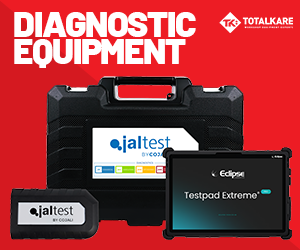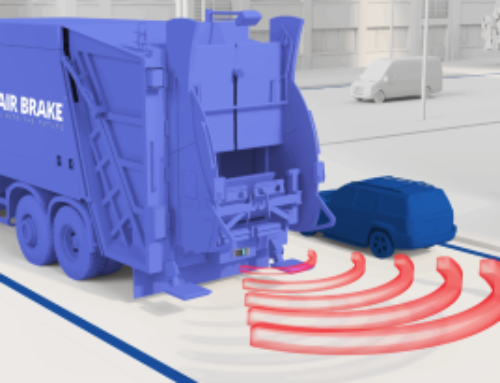A market in motion: the evolution of telematics
 Beverley Wise, regional director for Webfleet, a Bridgestone company, explores how telematics innovations are transforming fleet operations, from AI-powered insights to electrification and compliance solutions
Beverley Wise, regional director for Webfleet, a Bridgestone company, explores how telematics innovations are transforming fleet operations, from AI-powered insights to electrification and compliance solutions
Fleet telematics has come a long way from its early roots in GPS tracking.
Over the past two decades, telematics solutions have evolved into comprehensive fleet management platforms that integrate vehicle diagnostics, driver behaviour monitoring and advanced automation tools.
Transport operators now rely on a wide variety of real-time insights to optimise route planning, improve fuel efficiency and enhance driver safety.
As telematics continues to evolve, industry leaders are being recognised for their role in driving innovation.
Webfleet, Bridgestone’s fleet management solution, has been at the forefront of this transformation, leveraging cutting-edge technologies such as AI-powered insights, integrated tyre sensors and EV management tools.
These advancements are helping transport operators tackle the industry’s evolving challenges and optimise their operations more effectively.
AI and data-driven decision-making
One of the most transformative trends in telematics is set to be the integration of artificial intelligence (AI) into fleet management systems.
AI-driven tools, such as Webfleet’s AI Assistant, are already enabling fleet managers to interact with data through simple prompts, providing instant insights into fuel consumption, driver performance and maintenance needs.
By automating data analysis, AI helps transport operators make quicker, more informed decisions, reducing downtime and operational costs.
AI also plays a critical role in enhancing road safety. Telematics solutions equipped with machine vision and AI-powered cameras, such as Webfleet Video, can offer deeper insights into driver behaviour, detecting potential risks such as such as mobile phone use. Real-time alerts allow drivers to self-correct before incidents occur, helping fleets reduce accidents and insurance claims.
The electrification of fleets
The shift toward electrification is another major force shaping the telematics landscape.
With government policies encouraging decarbonisation, UK transport operators are increasingly looking for ways to transition to EVs. However, managing an electric fleet presents new challenges, from battery range concerns to charging infrastructure.
Webfleet’s EV Services Platform provides an integrated system, connecting fleet operators with energy and mobility providers.
Solutions such as the EV Transition Tool help businesses assess vehicle suitability for electrification, while the EV Charger Monitoring Solution ensures efficient depot-based charging.
By providing real-time visibility into charging operations and vehicle performance, these innovations make EV adoption more feasible for transport operators.
Enhancing compliance and productivity
Regulatory compliance remains a key challenge for UK transport operators, particularly when ti comes to drivers’ hours and vehicle safety regulations.
Telematics solutions streamline compliance by automating tasks such as tachograph data management. Webfleet’s TachoShare, for example, enables remote tachograph downloads, reducing administrative burdens and minimising vehicle downtime.
Beyond compliance, telematics optimises workflow efficiency.
Automated job dispatching and routing tools improve resource allocation, ensuring vehicles take the most efficient routes. Order optimisation tools also integrate seamlessly with enterprise systems, enhancing billing accuracy and workflow transparency.
 A safer, more sustainable future
A safer, more sustainable future
Sustainability and safety are now at the forefront of fleet management.
Transport operators are under increasing pressure to reduce carbon emissions while maintaining high safety standards. Advanced telematics solutions can help businesses achieve both objectives.
By integrating vehicle diagnostics with real-time tyre pressure monitoring, fleets can improve fuel efficiency and reduce the risk of breakdowns.
Data-driven solutions such as Webfleet OptiDrive 360 provide driver coaching, encouraging safer and more fuel-efficient driving habits.
Furthermore, AI-powered predictive maintenance tools can help prevent mechanical failures before they impact operations.
The next chapter in telematics innovation
The future of telematics lies in deeper integration of AI, IoT and automation.
Emerging capabilities will enable fleets to anticipate maintenance needs, further optimise EV usage and enhance data-driven decision-making.
Frost & Sullivan’s recognition of Webfleet underscores the growing importance of innovation in fleet management.
By continuously evolving to meet industry demands, telematics providers are helping transport operators navigate an increasingly complex landscape.
As AI, electrification and automation continue to advance, UK fleets will be well-positioned to embrace a smarter, safer and more sustainable future.












